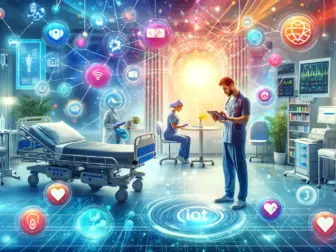Tag - telehealth
Exploring the Rise of Telehealth: Advancements and Accessibility in Modern Healthcare
Exploring the Rise of Telehealth: Advancements and Accessibility in Modern Healthcare
Telehealth, the provision of healthcare services through digital communication platforms, has seen an unprecedented rise in recent years, transforming the way patients interact with healthcare providers. This digital revolution in healthcare has been propelled forward by advances in technology and a growing necessity for remote care, particularly highlighted during the COVID-19 pandemic. Telehealth encompasses a range of services, including virtual consultations, remote patient monitoring, and mobile health (mHealth) applications that allow patients to manage their health and wellness with greater autonomy.
One of the most significant advancements in telehealth has been the development and refinement of secure video conferencing tools that facilitate real-time interactions between patients and healthcare professionals. These virtual visits enable patients to receive medical advice, diagnoses, and sometimes even treatment from the comfort of their own homes. This not only expands access to care for those in remote or underserved regions but also reduces the risk of disease transmission in clinical settings, conserves scarce medical resources, and provides a convenient option for those with mobility challenges or busy schedules.
Remote patient monitoring (RPM) is another area within telehealth that has seen substantial growth. RPM utilizes devices to track a patient’s vital signs and other health data, which is then transmitted to healthcare providers for analysis and follow-up. This technology has proven especially beneficial for managing chronic conditions such as diabetes, heart disease, and asthma, where continuous monitoring can lead to timely interventions and better-managed care plans.
Furthermore, mHealth apps have brought healthcare directly to patients’ smartphones and tablets, offering tools for medication management, mental health support, and lifestyle changes. These apps have democratized health education and empowered patients to take charge of their well-being by providing accessible resources and personalized tracking of health metrics.
Telehealth has also made strides in addressing issues of inequality in healthcare access. By removing geographic barriers, telehealth services have the potential to reach marginalized communities, including those in rural areas, the elderly, and those without reliable transportation. The incorporation of translation services and culturally sensitive care into telehealth platforms has furthered the goal of equitable healthcare for all.
Despite the clear benefits, telehealth does face challenges such as the need for robust cybersecurity measures to protect patient privacy and data. Ensuring stable and high-speed internet connections for both providers and patients remains a hurdle for consistent telehealth delivery. Additionally, there are regulatory and reimbursement issues that require ongoing attention to fully integrate telehealth into mainstream healthcare models.
As healthcare systems continue to evolve, the focus is on creating a seamless blend of in-person and virtual care that caters to the diverse needs of the patient population. Training for healthcare professionals in telehealth technologies and developing standardized protocols for virtual care are crucial steps forward. Moreover, continued research into the effectiveness and patient satisfaction with telehealth will help to refine these digital health services.
In conclusion, the rise of telehealth represents a significant shift in the healthcare landscape, offering numerous benefits in terms of accessibility, convenience, and efficiency. As the world becomes increasingly interconnected through technology, telehealth stands as a testament to the innovative ways healthcare can expand beyond traditional boundaries and continue to adapt to the needs of society. With careful consideration of its challenges and focused efforts to maximize its potential, telehealth is poised to remain an integral part of healthcare delivery in the years to come.
